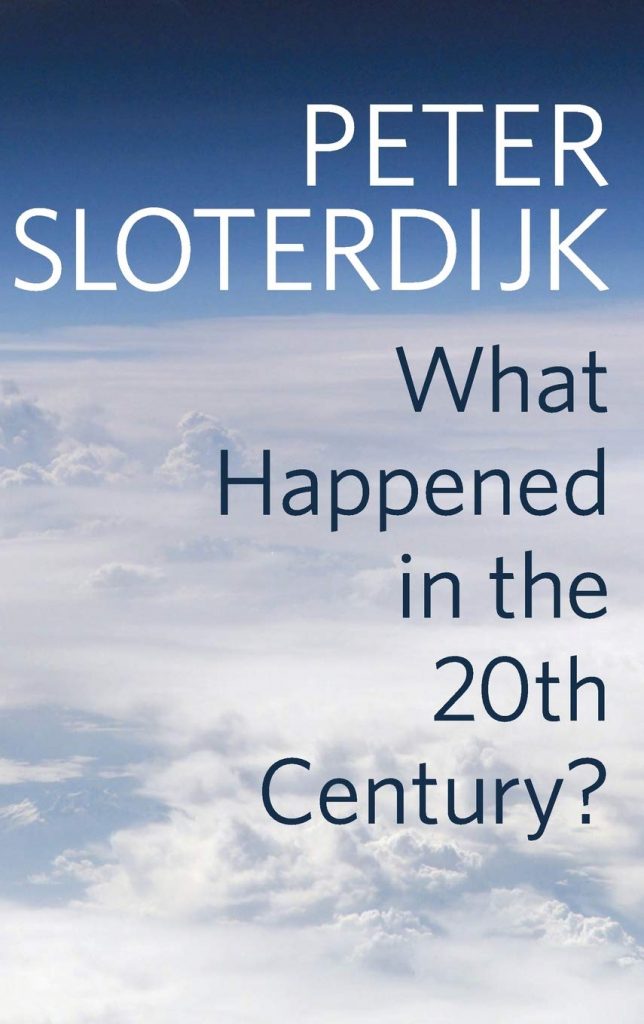
Below is an excerpt from from my essay: Collapse of the Monosphere: Industrialism and Ecological Architecture
Written for the Theory Readings course
The essay is a reaction to the book “What Happened in the 20th Century?” by Peter Sloterdijk
I – Industrialism and the Climate Crisis
What once was a conceptual truth spoken only in scientific conferences or referenced in textbooks has become an increasingly visceral reality: our era is being defined by a destabilization of the ecological cycles which form the basis of humanity’s relationship to the non-human environment. Nature was once regarded by humans as an unshakeable and ever-present backdrop, indifferent to the industrious inhabitants who would freely perform their civilizational drama without any perceived environmental limitations. Agrarian societies evolved and grew in conjunction with the environments around them, all without inciting large scale ecosystemic collapse. (agro-logistics? Something perhaps about how planting seeds were the first change that could have lead eventually to the influence of industrialism.)
Today this is no longer the case, as much of the planet has become enframed within industrialized systems of resource extraction and monocultural expansion. The high level of production these systems allow has left an eternal mark on the planet. The evidence of this mark has become so apparent that Earth systems experts have proposed that we now live in a geological epoch primarily defined by the actions of the human species, which they call the Anthropocene. While the fact of this overwhelming effect of ours might cause one to swell with pride, scientific historians Christophe Bonneuil and Jean-Baptiste Fressoz remind us: “The Anthropocene is the sign of our power, but also of our impotence.” Elaborate on how the form and power of cities most effectively represents how dominant human society has become over the planet.
The influence of our industriousness has been immense, resulting in a catastrophic mess that is quickly catching up with us. Modern industrialized techniques of farming, fishing, mining and logging have been scaled up at a frighteningly accelerating rate, that they have begun to outpace the environmental rhythms of regeneration they rely on, engendering deadly repercussions throughout the biosphere. Without a serious course correction, negative feedback loops caused by pollution and environmental degradation threaten to disturb not only the industrial regime of resource management that sustains much of the human population, but also the ability of non-human populations to sustain themselves.
The industrialist mindset, theorized in the 18th and 19th centuries by philosophers like Henri de Saint Simon, became humanity’s preeminent posture towards the world during the 20th century. Industrialism often connotes a specific strategy or scale of material production, but it should be understood more broadly as that pernicious thread of thought, tendency in routine, or pattern of development that seeks to simplify the emergent spontaneity and unknowable complexity of both human and non-human nature into linear and logical systems, fully knowable and quantifiable. Industrialism urges one to view the amazon jungle as a standing reserve of resources ready to be extracted and turned into capital, instead of a vast network of infinitely interconnected species capable of fostering a level biodiversity unknown anywhere else on the planet. This approach certainly has its advantages, offering superior production speed and ease of replicability, but the time frame it operates within is necessarily limited. When taking a more generational perspective, the short sightedness of industrial systems becomes abundantly clear as their wasteful side effects compound and multiply.The synthetic fertilizers used in industrial agriculture were once seen as a scientific miracle, allowing farmers the ability to inject their farmland with artificial nutrients that came from distant factories, bypassing traditional methods of soil regeneration that had been developed over generations. This lead to a rapid increase in crop production as the agricultural process became streamlined, leading to the development of today’s factory farms. The initial enthusiasm for this system of food production has since cooled, as scientists discovered that over time the nitrogen and phosphorus used in fertilizers seep into nearby waterways, propagating enormous algal blooms which decimate delicate aquatic ecosystems. This has devastated the bird populations which rely on fish stocks displaced by dead zones, not to mention the huge quantities of dangerous greenhouse gasses that are emitted during the initial production of the fertilizers. The euphoric high generated by the initial results of an industrialized process can be powerful, but the price of the come-down is long lasting and widespread.